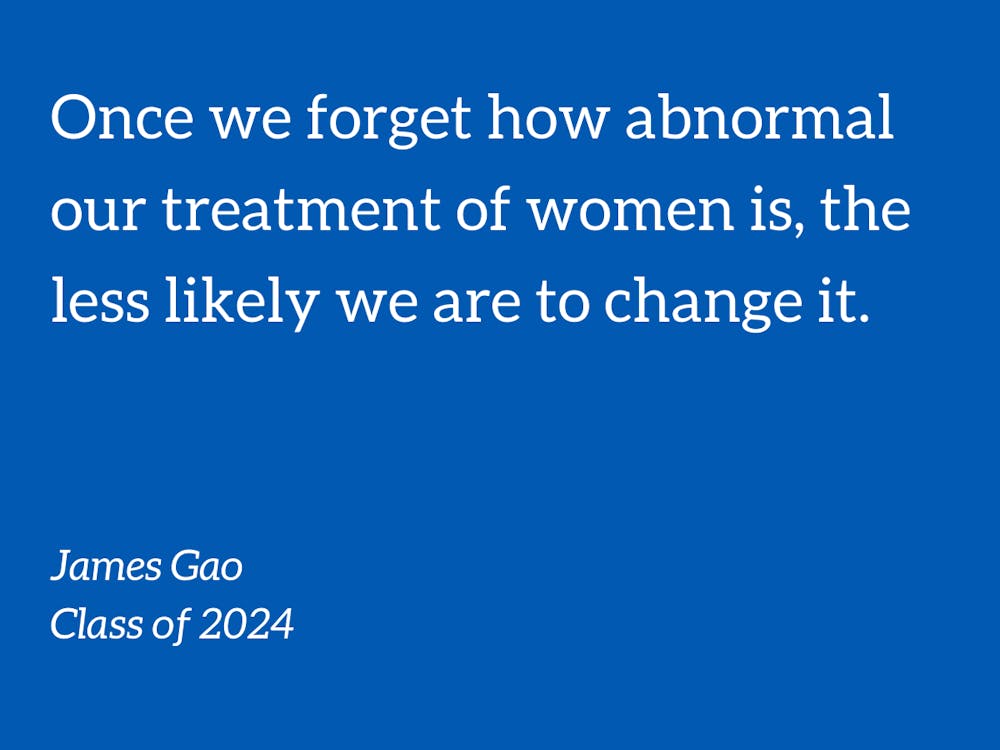Last week, the 2022 edition of U.S. News’ Best National Universities came out. Thankfully, Duke has emerged from the abyss of the double digits to return to a comfortable #9. Our fragile egos rest easy.
There’s one statistic, however, where Duke consistently remains number one: the percentage of undergraduate women who report some sort of sexual assault during their four years at Duke. In this category, we consistently distinguish ourselves from peer institutions. At Harvard, 33% of undergraduate women report having some sort of unwanted sexual conduct during their four years on campus. At Yale, that number was 39%. Data collected from a number of other schools tell a similar story:
● And, of course, the University of North Carolina at Chapel Hill: 35%.
These numbers are staggeringly high. On average, more than three in ten women at these schools report some sort of sexual assault. This data points to a larger problem in American society: the lack of scrutiny for those at the very top. We hold these institutions in high regard. They are where CEOs and politicians send their children. Time and time again, we are told that they are incubators for tomorrow’s brightest minds. Yet these numbers suggest that no matter how hard they may try to climb up the societal ladder, women cannot expect their own safety. Our university—and all others like it—are breeding yet another generation of movie producers, actors, television anchors, politicians and executives who feel entitled to others’ bodies. How can it ever be the case that “Time’s Up” when so few women are ever given the time of day?
This leads us to an even more uncomfortable conversation: as terrible as these institutions are for women and those femme-of-center, Duke stands out uniquely in its awfulness. There are no definitive answers as to why. It is likely due in part, as previous Chronicle writers have suggested, to Duke’s comparatively weak sexual assault prevention training program. Part of it can be attributed to the prevalence of Greek life. But it is unlikely that a lack of access to information is the root cause of sexual assault at a place like Duke. In this case, it seems unfair to attribute to ignorance what can be more fairly depicted as malice. And similarly Greek schools, like Vanderbilt and Northwestern, have much lower rates of sexual assault than we do. It is time that we embrace a difficult truth: that Duke’s women are suffering simply because no one cares enough to do anything about it. The administration is content with complacency, likely in part because the university’s rankings keep rising in spite of their inaction. And perhaps the students have known this 48% statistic for so long that we have begun to accept it as a given. This is my biggest fear: that once we forget how abnormal our treatment of women is, the less likely we are to change it.
So far, I have also neglected to mention the plight of other minority groups that face high rates of sexual violence. The Association of American Universities’ (AAU) campus climate report, which published the other schools’ female sexual assault statistics, distinguishes TGQN students (transgender, genderqueer/nonbinary, gender questioning, or gender not listed) as especially at-risk. While Duke does not have specific data on these identities, their statistics for gay, lesbian, and bisexual students (50% of GLB women and 28% of GLB men) suggest that the problems that plague our campus do not affect cisgender heterosexual women alone. The AAU data is not comprehensive enough to make conclusions about Duke’s sexual assault statistics for disabled students and men relative to other schools. Still, their suffering—13% of men, 56% of women with disabilities, and 23% of men with disabilities—should not be forgotten simply because they cannot be spotlighted next to the Ivy Leagues.
Where do we go from here? As with so many things in the world, the onus for reform falls mainly on men. I am certain that almost every woman at Duke knows that 48% statistic by heart. But I am not certain how many men do. The men at Duke need to be better allies, and not just performative activists on social media. They can be better listeners and more observant guardians. They can share the security that their gender identity confers to them with those around them. I will spotlight the Duke Men’s Project, a learning community sponsored by the Women’s Center that provides a space for those masculine-of-center to learn and reflect on their own identities. If we collectively take the time to contemplate the impacts of our actions both big and small, we can create safer, happier communities.
48, not 9, is the number that Duke students should parade around campus until it drowns out the noise of anything else. After all, I do not see sexual assault statistics being factored into U.S. News or any other college ranking system, even though these numbers will affect students’ college experiences far more than statistics like the faculty to student ratio ever would. 48 is the number we should repeat until it is no longer a characteristic of our university as distinguishing as our athletics or our architecture. Because the longer we wait, the more we will brainwash ourselves into thinking we cannot change—and the more women at Duke will have to suffer thinking that their pain is just a fact of life.
*Duke did not participate in the 2019 AAU survey, which is where the data for the other schools on this list come from. This accounts for the lack of comparable data on disabled and TGQN students. There may also be slight differences in methodology or survey implementation. You can read more about Duke’s decision here.
**Thank you to Lily Levin, whose previous article “Forty-eight percent” was influential to my writing.
James Gao is a Trinity sophomore. His columns runs alternate Fridays.
Get The Chronicle straight to your inbox
Signup for our weekly newsletter. Cancel at any time.

